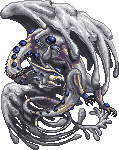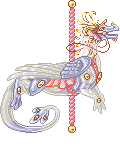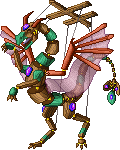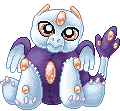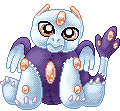
(I just got back into art so this is probably going to get updated a lot.)
"Mire Drakes are a strange variant of dragon, bearing little resemblance to the void or celestial kin they distantly have. About as small as a rewin, these dragons still are as ferocious as their larger kin, and enjoy getting into aggressive battles with one another over a caught fish, or a new stretch of territory. Because of this, they bear a peculiar feature- a thick mane, that trails all along their spine, which protects their small bodies when in battle. This fur is also useful when it comes to camouflage, the large tufts that line their heels drag in the mud behind them, obscuring their tracks from being detected by most. Another peculiarity of these beasts is their almost comically large claws, which they use for both burrowing into the mud, and for catching their favorite prey, fish. Because of this, it is recommended not to sneak up on one of these- as some mages have learned the hard way the fish and flesh are equally sliced by their talons."
True Facts about the Mire Drake:
- Are around the size of a corgi.
- The manes are usually very stiff on males, and the fur can be used as brush bristles.
- Though their wings are vestigial, they use them for mating displays and the occasional aide in swimming, should they accidentally fall in.
- The large claws on their fore-paws are used for spearing fish.
- The large fangs are more prominent in males, with them using them during fights over females as a way to try and stab the opponent through their manes.
- Even though they are aggressive in the wild, make perfect companions when captive bred.
- Although burrows in mud are most common, occasionally when the mudlands flood they will climb trees to roost, using their large claws as anchors while they sleep.
- Their beak is used for ripping and tearing into the their food, while the few teeth they do have are mainly used as defense from larger animals.
- Although mainly fish eating, have been known to devour rocks.
- Use their large ears as compensation for weak eyesight, and also as an alert system when focused on hunting.
- Generally non-active, as their bulky bodies are not built for running.
- In the wild, they mate for life, and the mated pair takes care of the hatchlings for a few months after they hatch.
- May have some attachment to some form of magic, but it is yet to be figured out.
- Sometimes in defense will spit a weak form of acid as a last resort. This acid burns quite well, so it may be a vestige from a proper fire-breath system.









